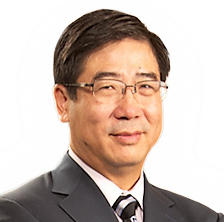WEST ORANGE, NJ, UNITED STATES, September 19, 2022 /EINPresswire.com/ — People know they are getting older when they think TikTok simply refers to the sound of a mechanical clock, they fail to recognize any singers up for a Grammy Award, they still use a printed map for directions — and their spinal discs are bulging, herniating, or both. So, says endoscopic spine surgery expert Dr. Kaixuan Liu, MD, PhD, who calls aging a primary reason for spinal deterioration; the other being injury.“A healthy spinal disc has a tough outer shell that can readily withstand normal day-to-day pressures on the spine. But the aging process causes a thinning and drying out of the outer core, thereby weakening the disc,” explains Dr. Liu, founder and medical director of the New York- and New Jersey-based Atlantic Spine Center and Advanced Spine and Outpatient Surgery Center. “Typically, by age 30, discs have already started losing flexibility. As spinal degeneration progresses, even simple traumas like twisting or bending might be all that is needed to compromise the disc, resulting in it bulging or tearing.”
A vertebral disc in the back or neck bulges when the disc’s inner biological material is pushed into the outer layer without cracking the disc’s protective, external shell. Herniation occurs when the disc’s external core actually avulses — splits, sometimes allowing a portion of the disc’s biological gel to ooze out and press on nearby nerves or the spinal cord itself, narrow the spinal canal through which nerves exit, or release natural inflammatory substances and biochemicals that irritate nerve fibers.
“A bulging disc is a warning sign of spinal deterioration and potential future complications. But, on its own, the weakened disc oftentimes causes few, if any, symptoms, unless the bulging becomes so pronounced it forces the disc to protrude far enough to rub on surrounding tissues and nerves,” Dr. Liu states.
But life is not so simple for those with herniated discs. Common symptoms of herniation include acute, sometimes intense, pain, as well as numbness, tingling, and muscle weakness in arms, shoulders, legs, or feet, depending on the location of the offending disc – neck or back – and the nerve pathways affected, says Dr. Liu.
Found between vertebrae in the neck and back, discs are rubbery elliptical pads that serve as natural shock absorbers to protect the spine from stressors and give it flexibility. Each disc consists of a tough outer shell – the annulus fibrosus – surrounding a soft, gel-like inner and outer center – the nucleus pulposus.
“The average disc measures only about an inch in diameter and a quarter-inch thick, but any damage to it can have a significant, quality-of-life impact that far exceeds its size,” Dr. Liu warns.
Although the natural aging process, age-related disorders like osteoarthritis, and trauma are key culprits in damage to spinal discs, other factors like genetics, obesity, and an unhealthy lifestyle also play important roles.
Treatment for symptomatic bulging discs can include a combination of non-steroidal anti-inflammatory medications; muscle relaxants; physical therapy; safe exercises such as swimming or cycling; and avoidance of activities that tend to place pressure on the spine. Indeed, bulging discs oftentimes resolve on their own without any significant therapy, Dr. Liu indicates.
Similar conservative approaches, in addition to epidural steroidal shots when needed to help ease the pain, are used to treat herniated discs. “But if these measures fail to control the pain and eliminate numbness and tingling sensations after six weeks to 12 weeks of therapy, then surgery, such as endoscopic discectomy, may be the next best step,” Dr. Liu says. He describes an endoscopic discectomy as a minimally invasive procedure involving insertion of a camera and surgical instruments through a small cut in order to carefully clip off the gel that leaked from the herniated disc. Much of the remaining disc is usually able to remain in place and heal.
Dr. Liu warns that a herniated disc left untreated or receiving delayed treatment may lead to permanent nerve damage. Experts agree. In a study published in the Journal of Bone and Joint Surgery (10.2106/JBJS.J.00878), authors write that patients who had herniated lumbar disc symptoms for more than six months prior to either operative or non-operative therapy experienced less overall improvement “in pain, function, general health, work status and satisfaction” than those whose treatment occurred earlier after onset of their symptoms.
Meanwhile, maintaining a healthy spine represents the best course of therapy, Dr. Liu says. He offers these general tips:
• Avoid a sedentary lifestyle by exercising regularly. Dr. Liu advises patients to talk to spine experts or exercise physiologists to determine the best forms of activity for strengthening core muscles, which help support the spine. The simple act of walking offers important benefits both to the spine and to overall health.
• Lose weight. Extra pounds not only increase pressure on discs but pull the spine forward into an unnatural position.
• Practice good posture. Sit up straight in a chair that provides good back support; keep feet flat on the floor. Place the computer screen and keyboard closer so that you are not slumping, slouching, or craning the neck forward.
• Take regular breaks from sitting.
• Practice good lifting techniques. Bend the knees and lift heavy items in a way that transfers the pressure from the spine to the leg muscles.
“We might not be able to stop the effects of aging, but we can take the necessary steps to minimize aging’s overall impact on the body, especially on the spine,” Dr. Liu says.
Atlantic Spine Center is a nationally recognized leader for endoscopic spine surgery with several locations in NJ and NYC. www.atlanticspinecenter.com
Kaixuan Liu, MD, PhD, is a board-certified physician who is fellowship-trained in minimally invasive spine surgery. He is the founder of Atlantic Spine Center.

